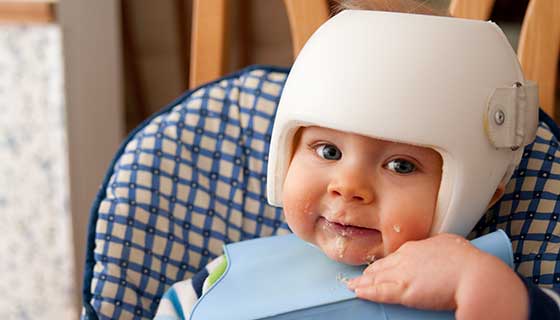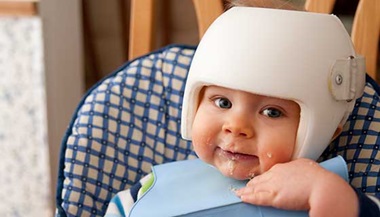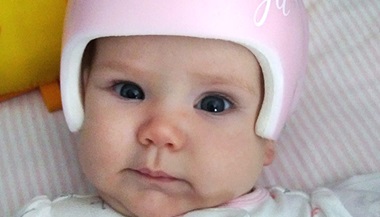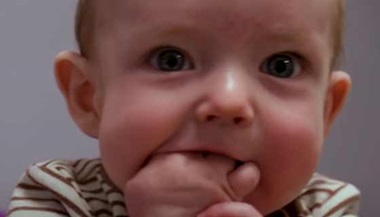Pediatric Craniosynostosis: An Overview
When babies' skull bones fuse earlier than they should, it causes their heads to grow in abnormal ways. Doctors call this pediatric craniosynostosis, which means your child's skull isn't growing properly. A severe change to a baby's head shape soon after birth is a telltale sign of this condition.
Johns Hopkins pediatric neurosurgeons have successfully treated many infants with this condition. Here are some of the basics.
What is pediatric craniosynostosis?
When a baby is born, the skull consists of several plates. These plates are very malleable (moveable), which helps ensure the skull can fit through the birth canal.
In between the skull bones are sutures (or fibrous joints) that separate each bone. As a baby grows, those sutures eventually close. When one of these sutures fuses or closes, too early, it's called pediatric craniosynostosis.
The effect is an abnormal head shape that could look like:
- Bulging of the forehead on one side
- Bulging of the forehead and back of the head
- An abnormally long head
- An irregularly shaped face and skull (an even rarer condition that occurs when two sutures fuse)
Why does craniosynostosis cause such an abnormal head shape?
You may wonder how two bones fusing together could cause such a drastic change in your child's head shape. For many years, doctors wondered this too.
It's now widely believed that when a suture closes early, the skull then grows parallel to the suture. Doctors call this Virchow's rule, after leading 19th-century German physician Rudolph Virchow.
For example, consider the suture that spans the middle of the head. When this fuses early, the brain grows lengthwise (parallel to the suture), causing bulging in the forehead and bulging in the back.
Does craniosynostosis hurt my child? What can I do to fix it?
In many cases, this is largely an aesthetic problem. It may be severe enough to need correcting, but that doesn't necessarily mean a change in head shape is hurting your child.
Your doctor can tell you whether (and which) treatment is right for your child. Today, Johns Hopkins neurosurgeons treat this condition in minimally invasive ways for infants 3 months old and younger. That means:
- Less risk of surgery complications
- A faster recovery
- Less risk of lasting effects






